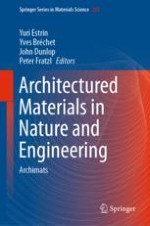2019 | OriginalPaper | Buchkapitel
6. Topological Optimization with Interfaces
verfasst von : N. Vermaak, G. Michailidis, A. Faure, G. Parry, R. Estevez, F. Jouve, G. Allaire, Y. Bréchet
Erschienen in: Architectured Materials in Nature and Engineering
Aktivieren Sie unsere intelligente Suche, um passende Fachinhalte oder Patente zu finden.
Wählen Sie Textabschnitte aus um mit Künstlicher Intelligenz passenden Patente zu finden. powered by
Markieren Sie Textabschnitte, um KI-gestützt weitere passende Inhalte zu finden. powered by
